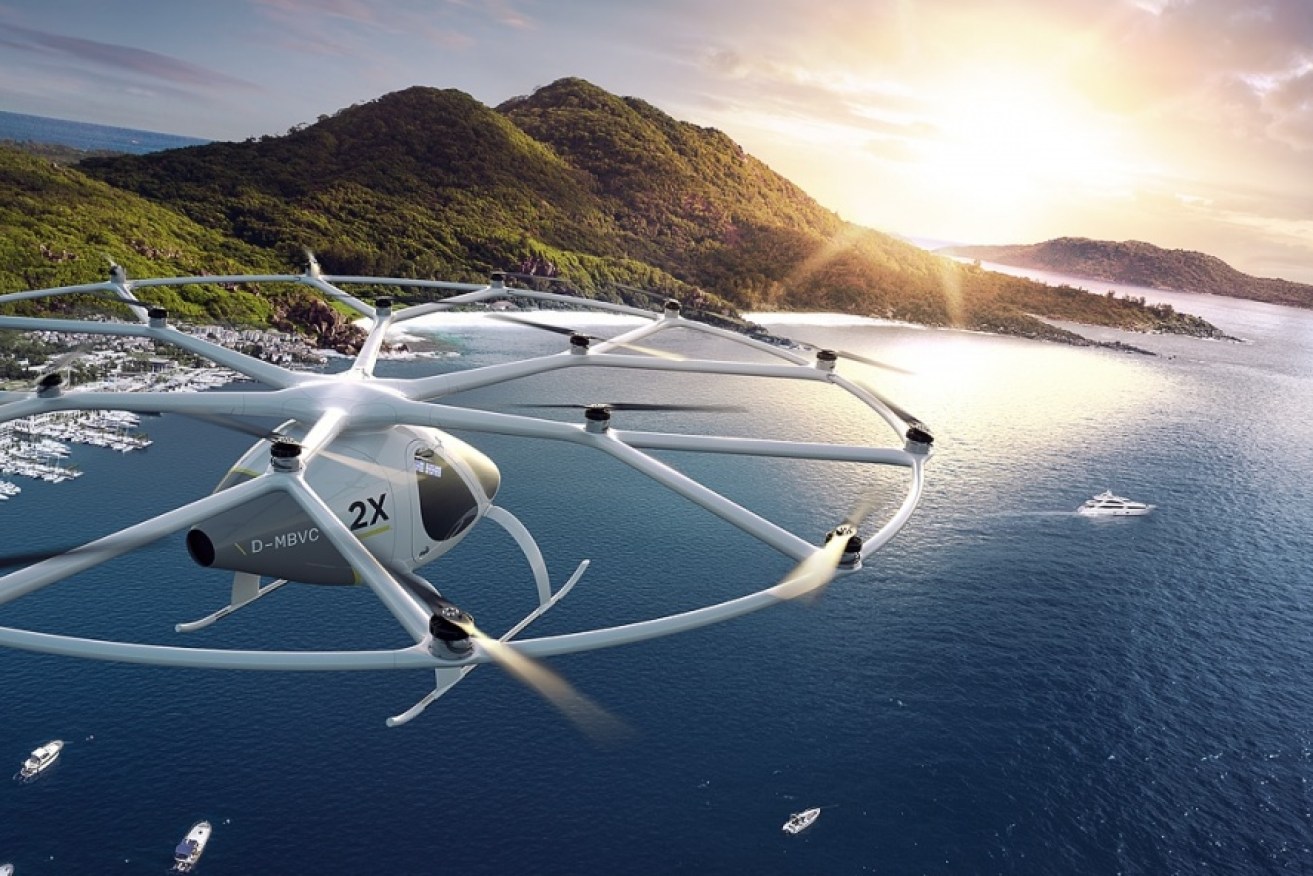Send in the drones to cut down your commute


Pilot–free, short-haul transport could have enormous benefits for those living in isolated communities. Photo: Volocopter.com
In July, the German carmaker Daimler announced a 25 million euro ($38 million) fund to help finance an autonomous “flying taxi service”.
Real-time tests are now reportedly being conducted by aviation start-up Volocopter for Dubai’s roads authority which aims to carry 25 per cent of its passenger traffic on autonomous transport by 2030.
These pilotless, electric “taxis”, known as VTOLs, could be operational with five years and its inventors claim the first licensed Volocopter should be on the market next year.
And what’s good for Daimler and Dubai might be good for Woy Woy – and other small communities around Australia like it.
The availability of pilot-free, short-haul transport could have enormous benefits (and consequences) for those people living in isolated communities that are difficult to get to but are not far from town centres as the crow flies.
Such as a small community like Patonga which, with its stunning setting on the NSW Central Coast, is only 12 kilometres from Woy Woy and 24 kilometres from Gosford.
But its charm for many is that it is only accessible by road from Umina from the north, by ferry from Palm Beach and Brooklyn, or by private boat.
A VTOL, or an aircraft like it, could change Patonga irrevocably if it loses its isolation.
You could say the same about any hard-to-get-to destination not far from a major centre.
The tiny community of Sandon in NSW’s Northern Rivers has a permanent population of fewer than 10 people. At present, it is only accessible by boat or a four-wheel-drive trek along a beach. The 40-kilometre drive to the nearest big town, Grafton, takes about 90 minutes.
But its population booms in summer with the arrival of campers, fishing enthusiasts and the owners of the 30 or so houses overlooking the Sandon River and the Pacific.
The million-dollar-plus prices reportedly being paid for Sandon’s old fibro fishing shacks suggests that easy access to this slice of paradise could see it become a year-round hot spot – and so ruin its charms.
While these two NSW villages are unique, there are plenty of other communities around Australia that could suddenly become commutable by VTOL linking to buses or trains to large centres.
From the isolated Pittwater communities and Blue Mountains boltholes outside Sydney to Cowes on the popular Victorian holiday town of Phillip Island, which is presently beyond commuting distance to Melbourne, a VTOL to a public transport link could have enormous impact.
Some might welcome the opportunity to reduce travelling time while just as many might fear what changes it would bring. One of these changes might be property prices if only the super rich can pay for some of the best views in the country.
If this sounds like it is straight out of Harry Potter or The Jetsons, don’t forget than only a few years ago we were saying the same thing about driverless cars and robots.
Daimler is behind VTOL and, like other major car companies, it is preparing for the massive changes coming in transport. We might not have any other choice to hail a flying cab, but only if we can afford the fare – and that is still up in the air.








